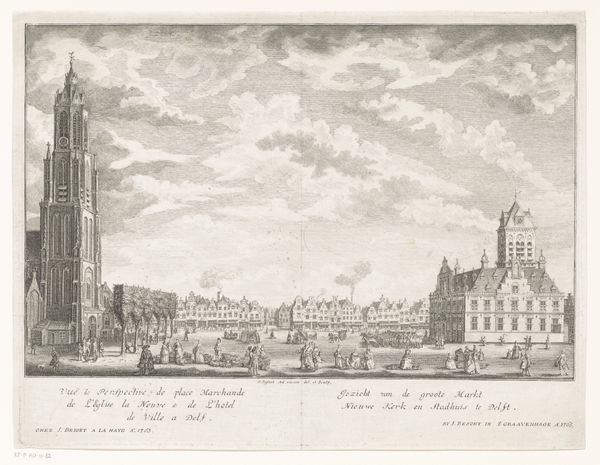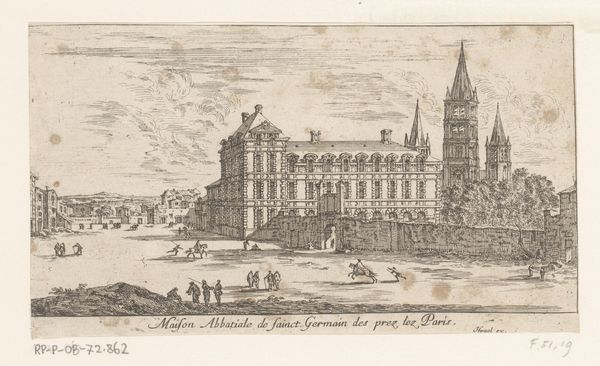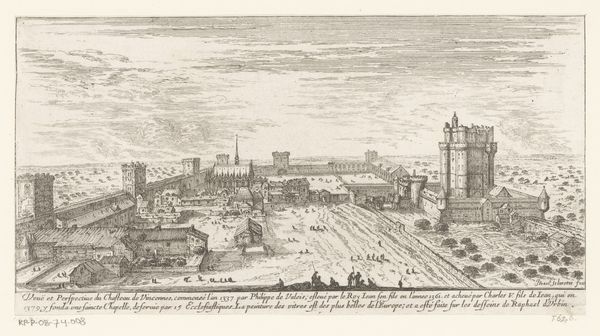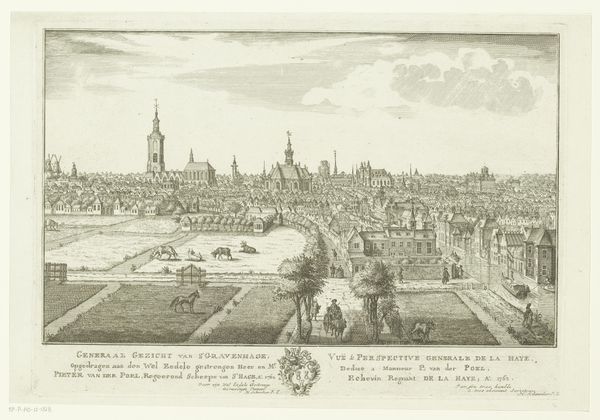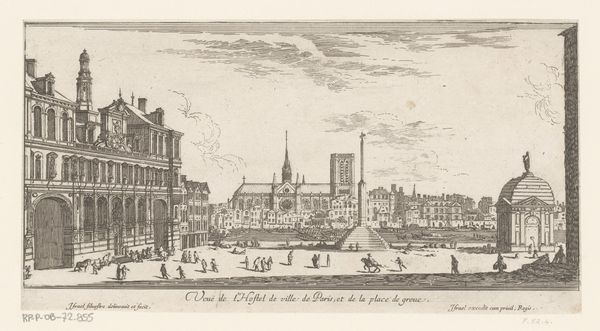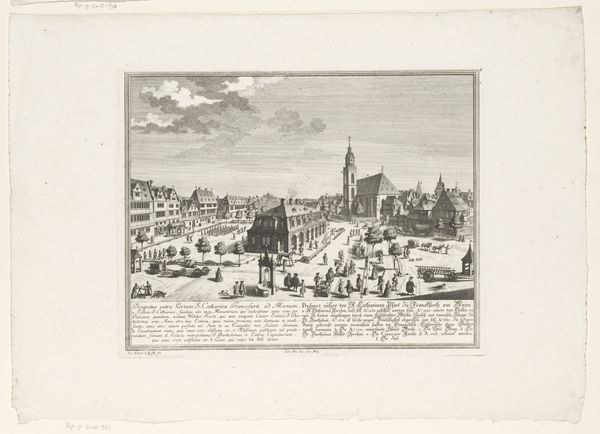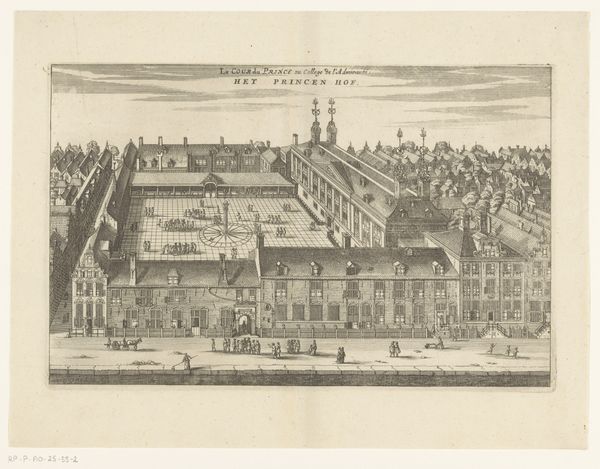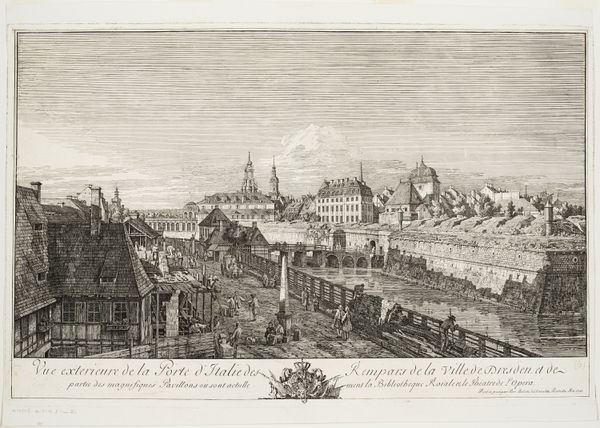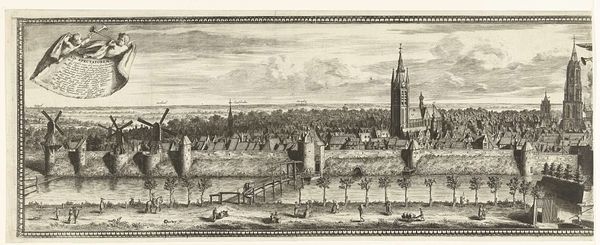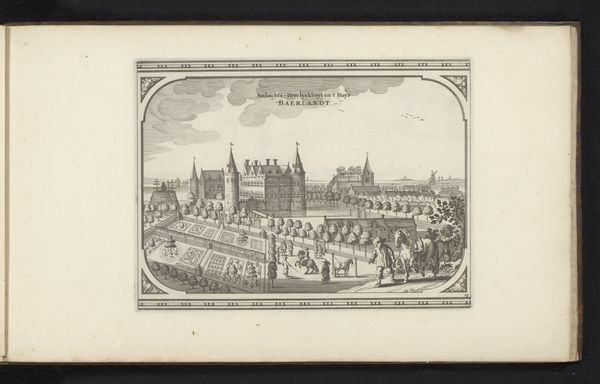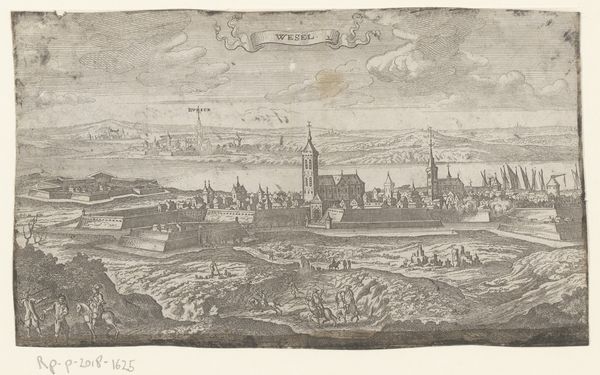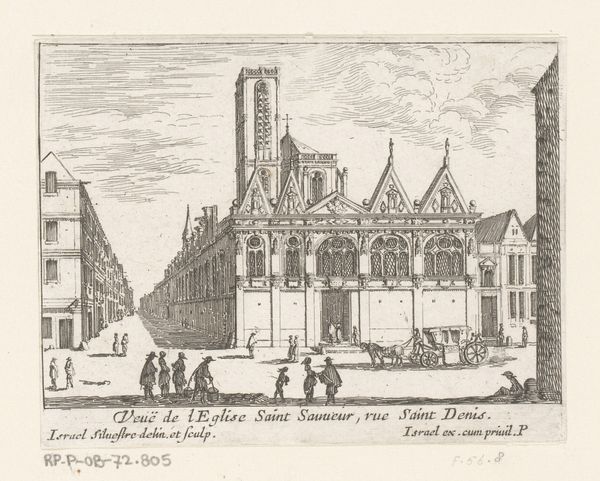
drawing, print, etching
#
drawing
#
baroque
# print
#
etching
#
cityscape
Dimensions: height 100 mm, width 163 mm
Copyright: Rijks Museum: Open Domain
Curator: This is Israel Silvestre's "View of the Place de Grève and Notre-Dame," an etching from 1652 currently residing here at the Rijksmuseum. Editor: It's striking how detailed this cityscape is, even on such a small scale. You can almost feel the bustle of the square and the imposing presence of the cathedral. The air feels full of energy, of work. Curator: Absolutely. Silvestre’s choice of etching, a relatively accessible printmaking technique, is significant. These cityscapes were meant to circulate widely, shaping perceptions of Paris itself. The Place de Grève, for example, wasn’t just a marketplace but also a site of public execution. Editor: That contrast is fascinating—the everyday commerce existing right alongside these somber rituals of state power. I'm curious about the production: what would it have been like to create so many of these, reproducing this single scene of Paris life? Curator: Indeed. The act of replicating these images itself speaks to the dissemination of a specific political and social narrative. See how Notre Dame looms over all aspects of daily life? It served as a constant reminder of a higher authority, the influence of the Church, and spiritual devotion, and moral duty. Editor: So, not simply a factual representation but a curated portrayal. It's clear that the materiality of this etching allowed it to be more than an artwork, and made it a kind of reproducible statement. We are given one artist's singular view of Paris but the final product ends up being incredibly democratic in terms of its consumption. Curator: Precisely. The image reflects a conscious construction of civic identity intertwined with the powerful iconography of the time, both religious and secular. Editor: Reflecting on it now, it really encourages one to ponder the power structures encoded within such an accessible medium, shaping perceptions through repeated impressions both physically, through the printing process itself, and culturally. Curator: Yes, and hopefully a deeper appreciation for the layered meanings embedded in what seems, at first glance, just a charming historical view.
Comments
No comments
Be the first to comment and join the conversation on the ultimate creative platform.

